Blue porcelain vase Masao Tagai
Blue porcelain vase Masao Tagai
Couldn't load pickup availability
Width: 14.2cm x 14.2cm Height: 17.5cm
Blue porcelain vase (gu-shaped, copy of copperware) made by Masao Tagai
1. Overview of the work
The appeal of this piece lies in its pale, tranquil "rain-past-blue" color, reminiscent of Song Dynasty celadon, and its neat silhouette, an adaptation of the "ko" shape of ancient Chinese bronze vessels to a vase for tea ceremonies. The narrowed-down center of the vessel gives it a breather, and the trumpet-shaped opening gently opens upwards to gently receive the flowers, while the lower part leading to the base has a low center of gravity, ensuring a sense of visual stability. Under the smooth, mirror-like celadon glaze, there are fine ice cracks scattered all over, and when the light hits it, it takes on a mica-like shadow, giving the vessel depth. The slight iron rust around the rim tightens up the pale blue world, adding a sense of dignified tension to the floor decoration.
2. Shape and design
| part | Shape Features | Aesthetic and functional effects |
|---|---|---|
| Mouth rim | Large, outward-curving trumpet shape. Silver-gray coloring with iron rim. | A key point that helps hold flowers in place and tightens the shape of the vessel. |
| neck | A vertically rising cylinder. Ice cracks extend vertically, creating a sense of movement. | Hold the flower stem straight and draw the eye upwards |
| Center of the body | A slightly protruding band-like ridge | Reproducing the "knots" of the bronze gu, creating rhythm and tension |
| Lower torso to base | Loosely squeeze it and stretch it again, then gather the hem to show the base material. | A low and stable center of gravity foreshadows the scenery of wabi |
3. The beauty of glaze and crazing
Color development : By suppressing iron powder and going through a "reduction removal" process that involves high-temperature reduction followed by final oxidation, a clear blue color is produced that is free of reddish hues.
Ice cracks and cracks : By creating a slight difference in the expansion coefficient between the clay and the glaze, and running fine cracks after cooling, the entire surface of the vessel is given a marbled shadow effect. With use, tea stains will soak in and the vessel will develop into a hazy landscape.
Iron rim treatment : The rim is thinly coated to oxidize the iron in the base material, producing a silver-grey to black iron color, which tightens the pale blue while recreating the "iron rim" look of classical official kilns.
4. Technical background
Masao Tagai, a full member of the Japan Crafts Association, has conducted extensive research into thick-glazed celadon and excels in his techniques for controlling the clay body, glaze, and firing atmosphere. In this work, the clay body contains a high content of feldspar and Gaia clay, and the expansion rate is set slightly higher than that of the glaze. The glaze is mixed with a high viscosity and oxidized at the end of the firing, making only the surface slightly opaque to ensure depth. For a mirror finish , low-temperature reduction is added after firing to remelt the glaze surface and increase the depth of the reflection. This allows for a unique celadon expression that combines the ice-cracking scenery reminiscent of Song Dynasty official kilns with a modern high-gloss texture.
5. Historical and cultural context
The Gu-gata style originated as a ritual vessel from the Shang period, and was also fired in official kilns and official kilns during the Song dynasty, and was beloved by Zen monks and literati. It was introduced to Japan as a Chinese flower vase during the Muromachi period, and was adopted by Rikyu and Enshu as a floor decoration for the tea ceremony, where it became established as a symbol of serenity and solemnity. This work is based on the classical Gu-gata style, but has been redesigned to modern proportions that fit into modern spaces by slightly widening the rim and lowering the foot. The clarity of the pale blue resonates with the white space of wabi-cha tea, creating a quiet elegance.
6. Combination with flower materials
| season | Recommended flower materials | Points to consider |
|---|---|---|
| spring | Wild cherry blossoms, snow willow | The vertical branches match the lines of the bow shape, creating the feeling of spring mist. |
| summer | Green bamboo, semi-summer | The vibrant green and cool blue glaze accentuate the summer scenery |
| autumn | Ako, wild chrysanthemum | The thin stems and round flower heads accentuate the curves of the vessel, enhancing the sense of wabi. |
| winter | Cold peony, Nanten | The stately red and white stands out against the pale blue, giving the alcove a dignified and sophisticated look. |
7. Points to note when viewing
Crazing and Shadows <br data-end="1720" data-start="1717">When strong light is shone on it from an angle, the cracks reflect like mica, creating a floating sensation on the surface of the vessel.
Contrast between the iron rim and the base material <br data-end="1782" data-start="1779">The black rim and the earthenware base at the bottom contrast nicely with the pale blue, creating the sophisticated look of a reproduction of a classic official kiln.
Depth of Reflection <br data-end="1839" data-start="1836">The mirror-like glaze softly reflects the light from hanging scrolls and lanterns, making the vase itself a "mirror containing the scenery."
8. Conclusion
This "Celadon Vase" is a masterpiece that crystallizes the stately form of ancient bronze ware and the mysterious ice-cracking scenery of Song Dynasty official kilns with modern aesthetic sense and technology. Put a flower in it and the tokonoma alcove will instantly become a tranquil setting, and as the crazing grows with the seasons, the vase will transform into "living celadon" that breathes with the user. We hope you will use it for many years to come, and engrave your own time into it as you converse with the flowers of the four seasons.
Share
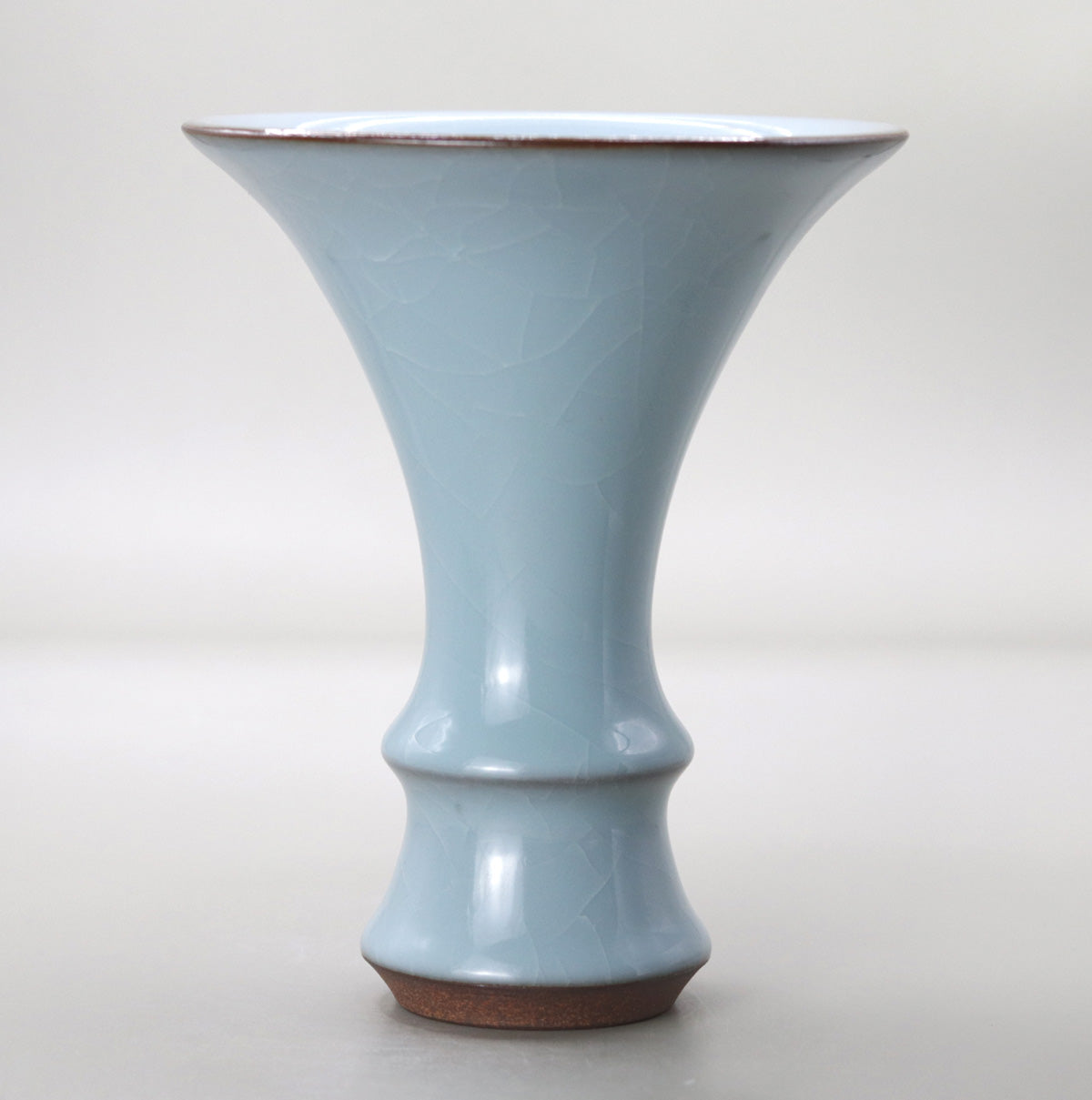
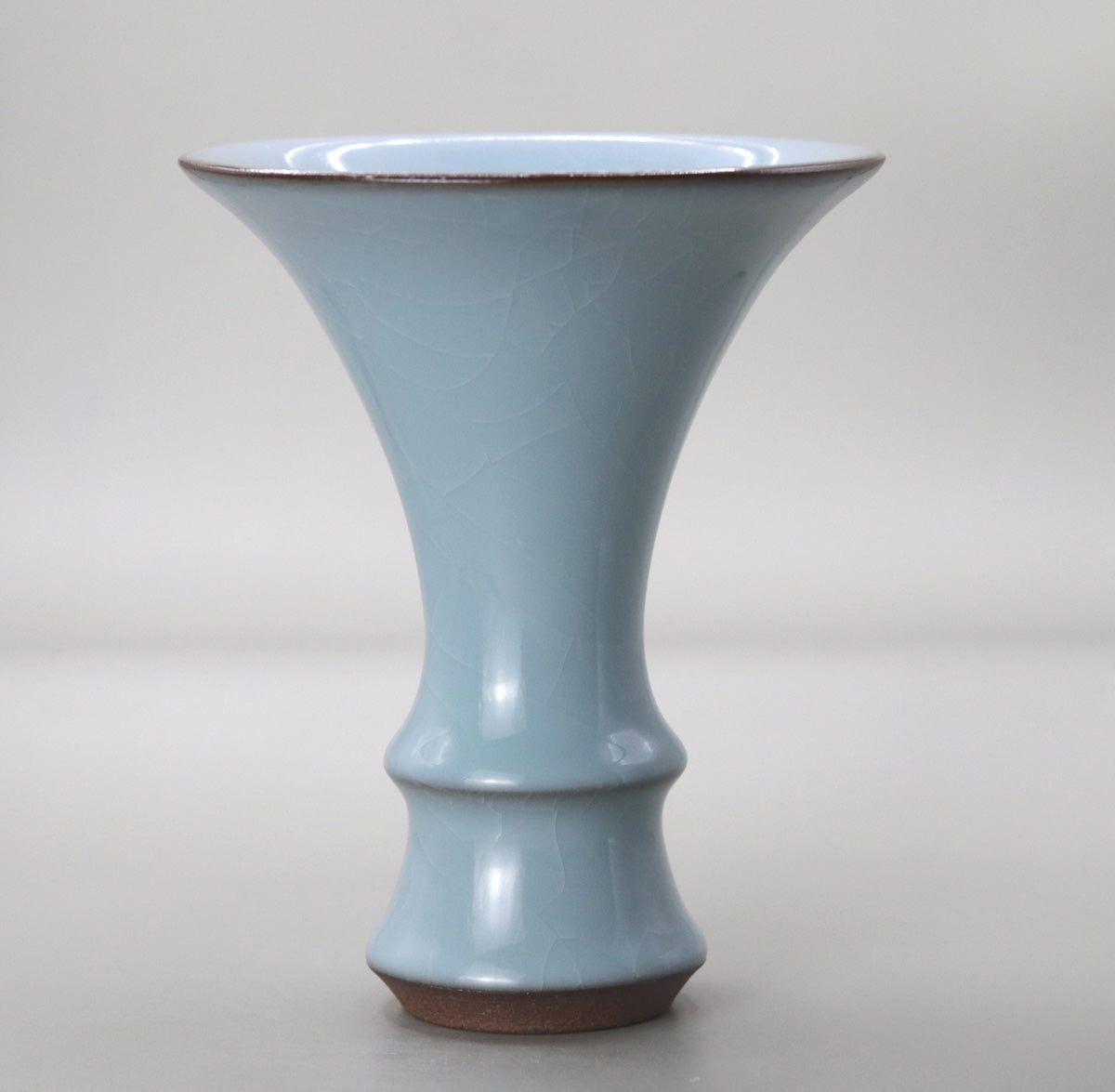
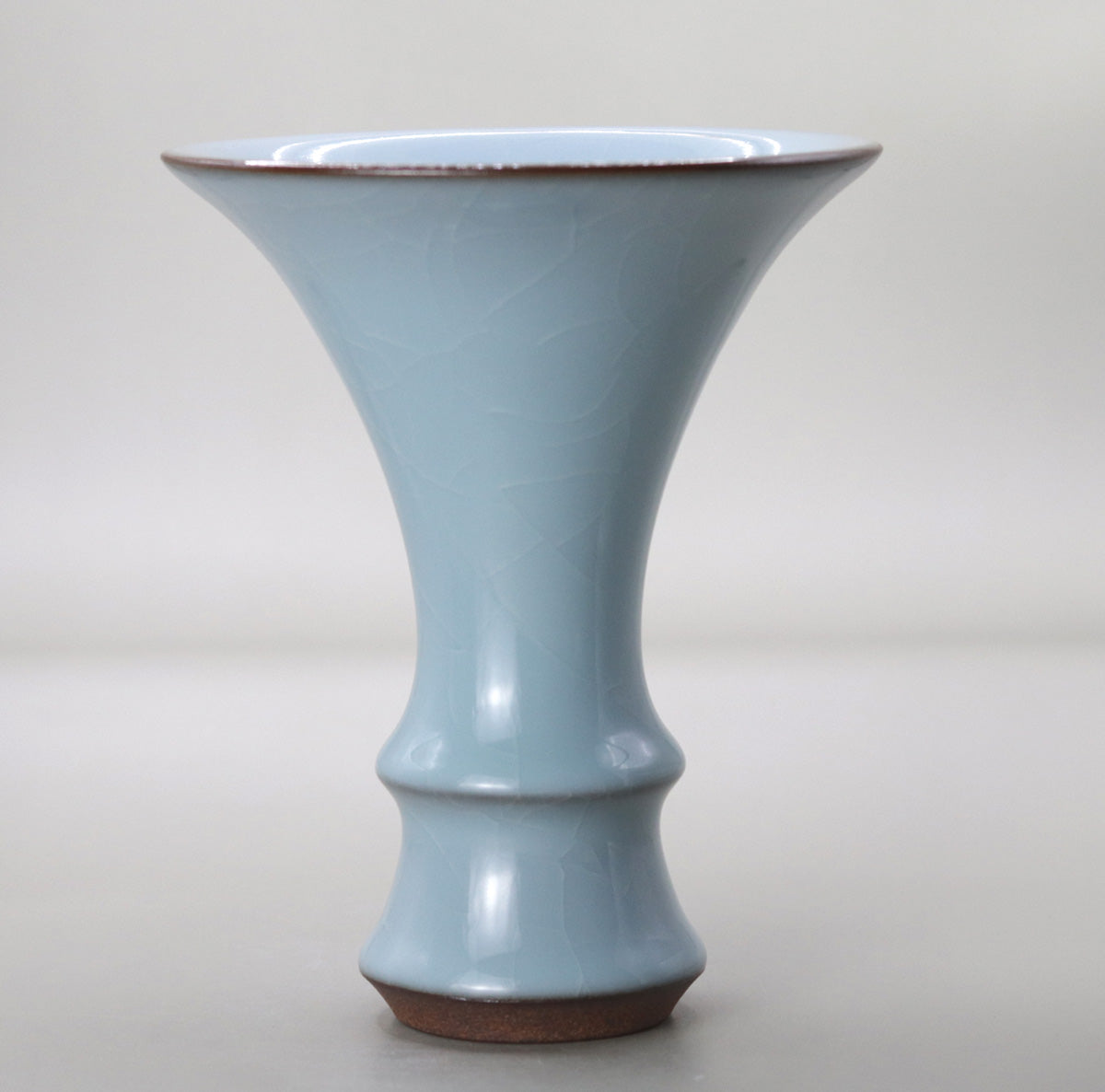
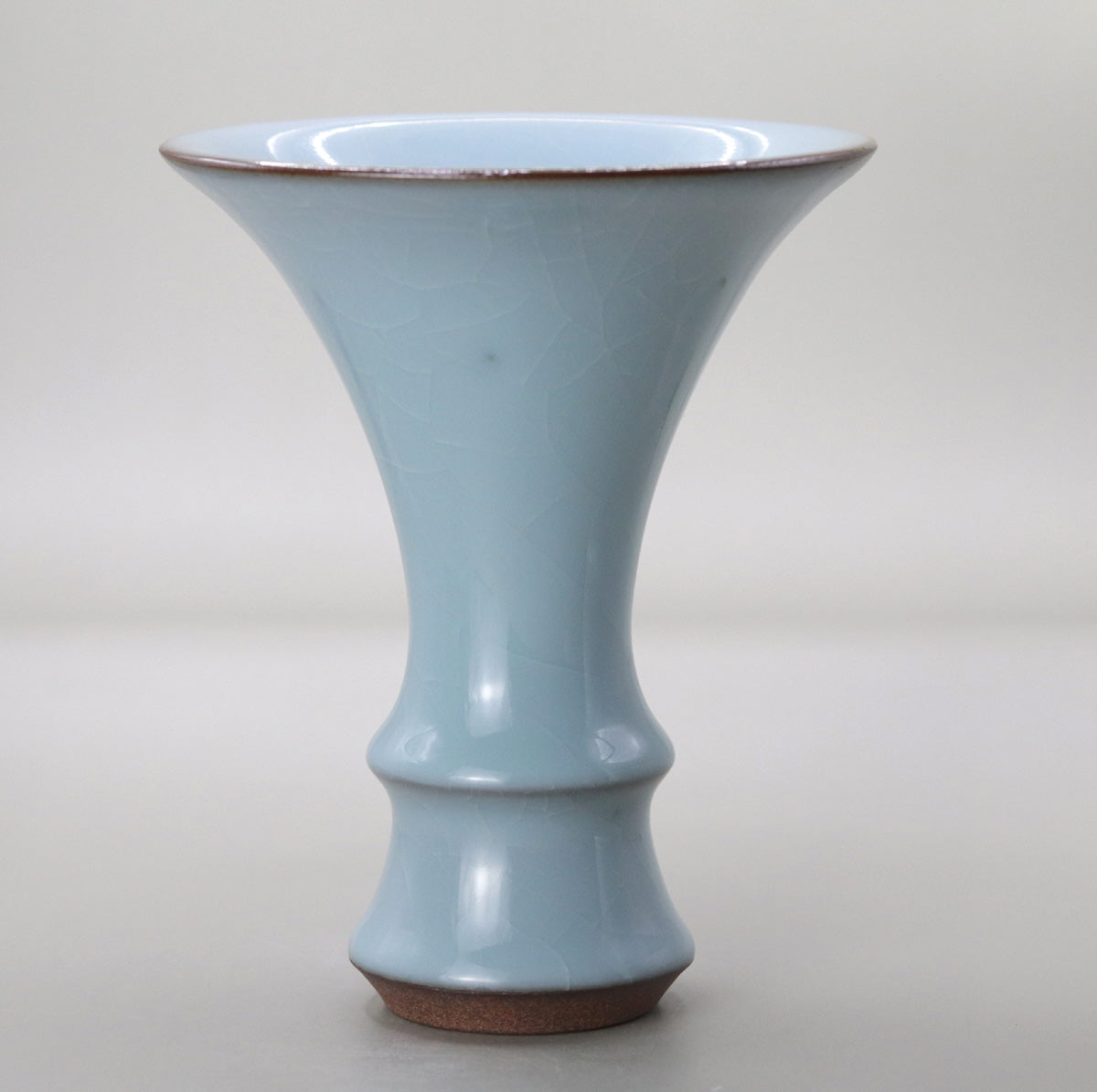
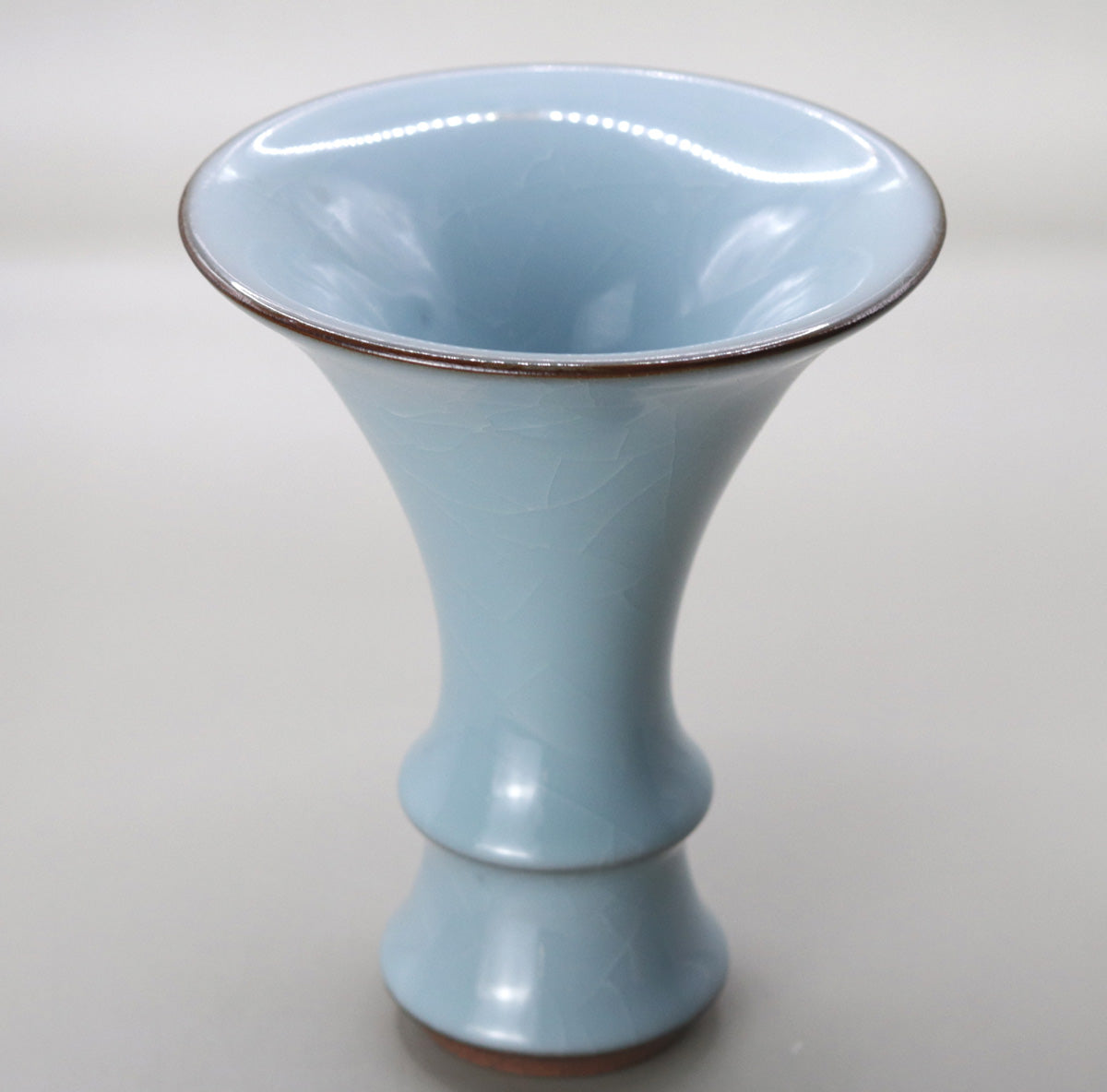
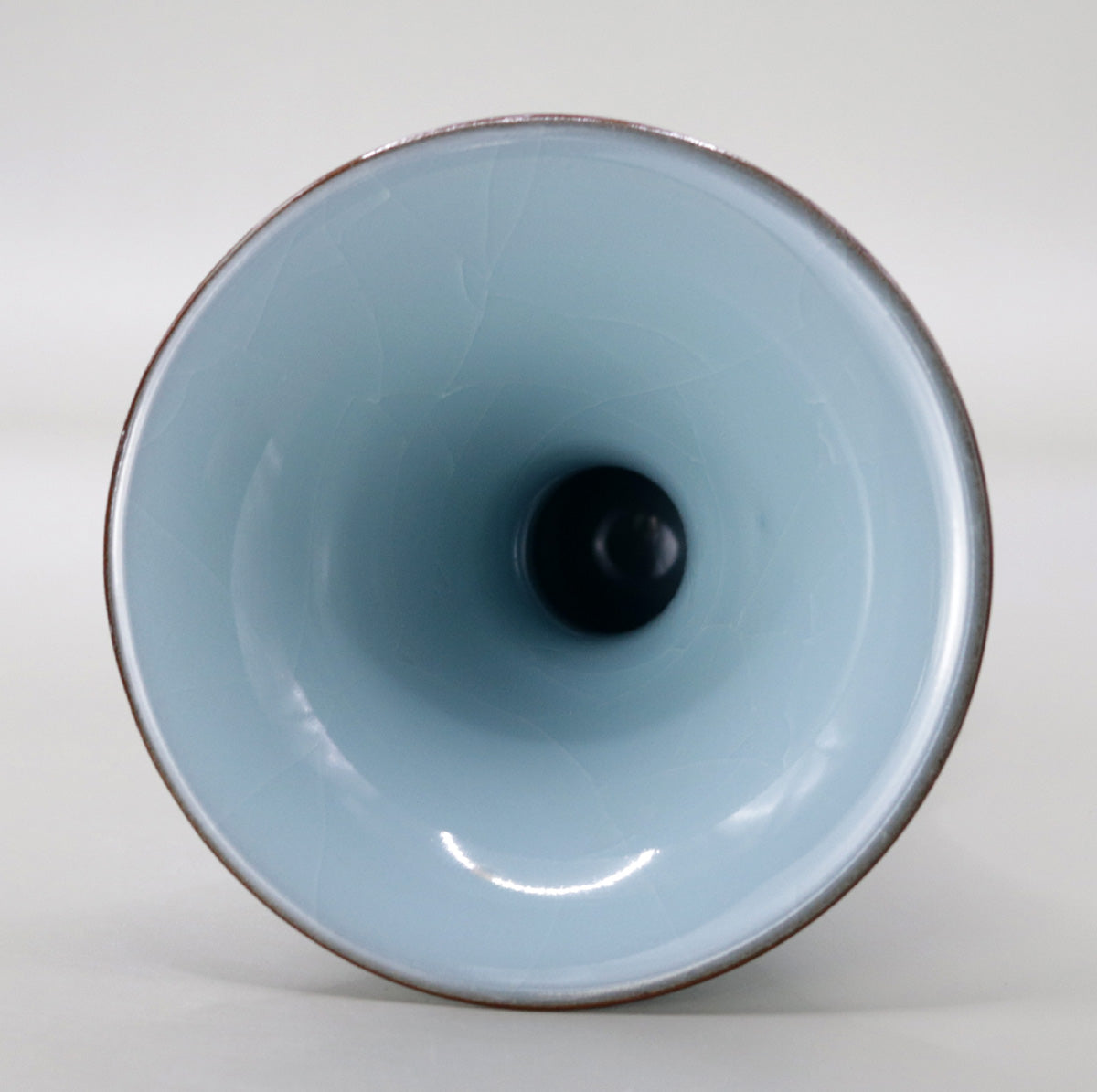
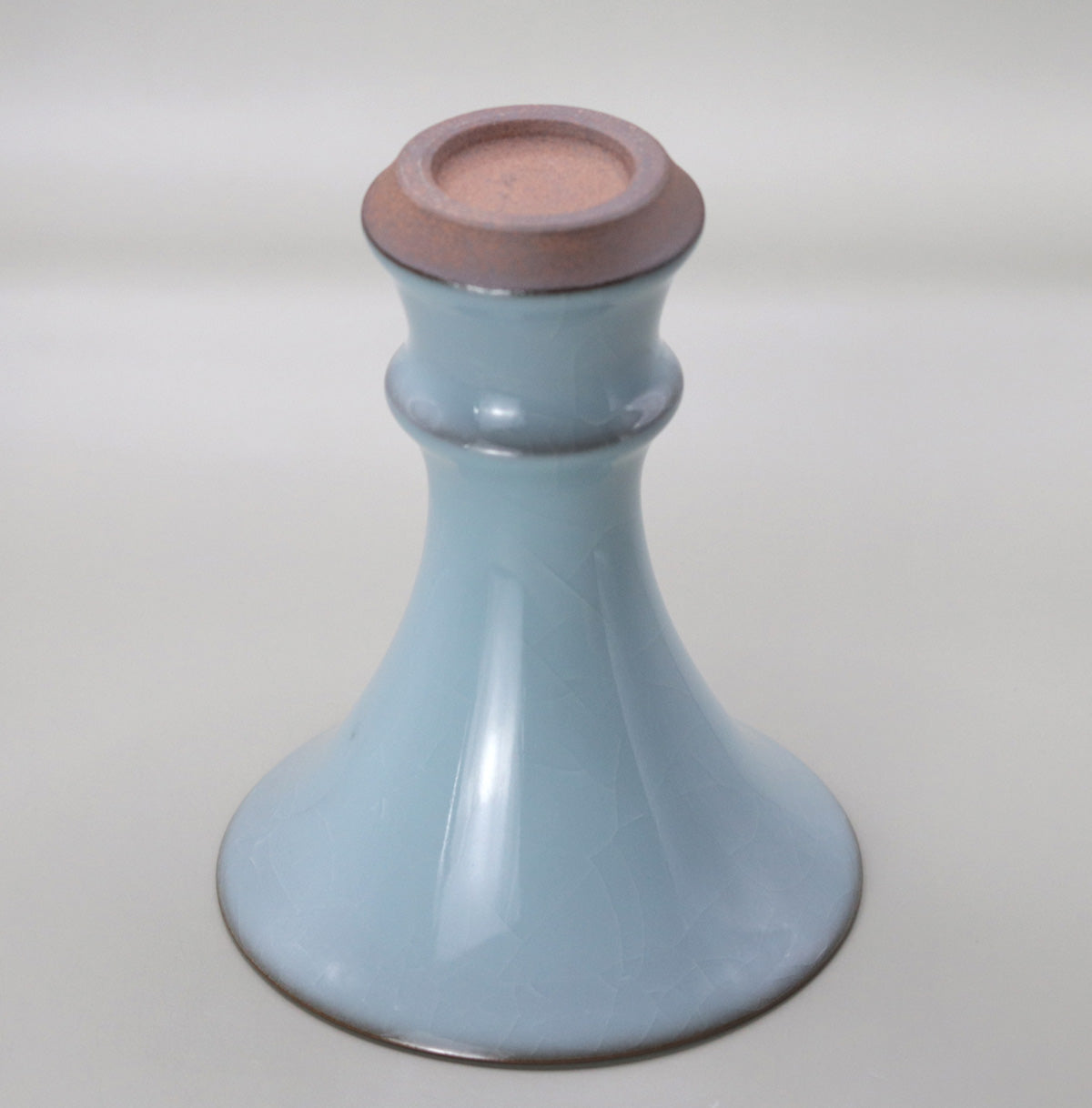
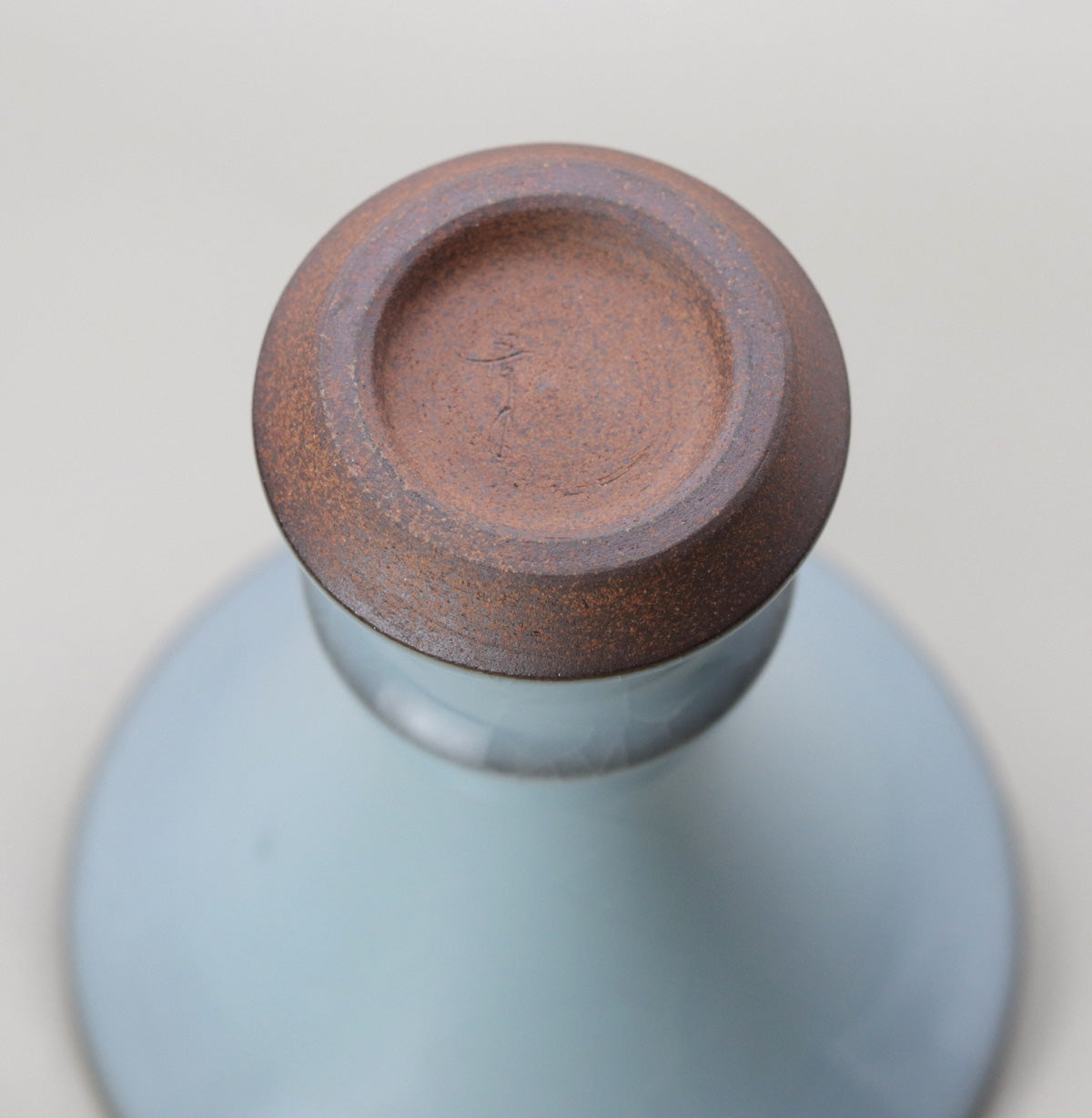
Multi-Column
-
[I will send it to you quickly and carefully]
We carefully package each product in a way that suits it best.
Also, delivery times vary depending on the piece (vessel, etc.).
Items that already come with a box will be shipped within 1-3 days of the order date.
For items that require a box to be made after your order, it will take approximately 30 days for production to be completed and then shipped.
In either case, once we have confirmed your order, we will contact you by email to inform you of the delivery date.
-
[Requests when purchasing pottery]
Even products that look the same may differ slightly in color, shape, size, etc.
The way the glaze is used, the power of the kiln, the firing method, the season, and the humidity also affect the appearance of the pottery.
Please understand the individuality of each piece of pottery and enjoy the unique warmth of handmade.








